
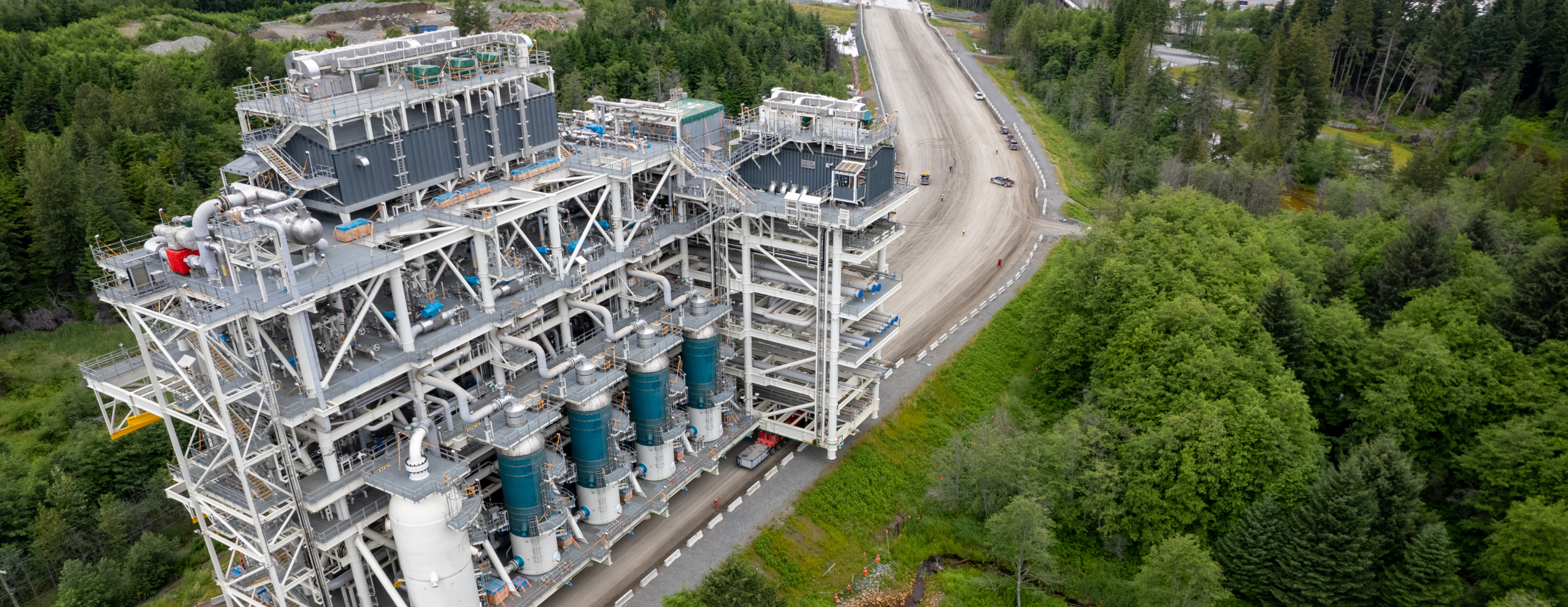
LNG Canada Export Facility
LNG Canada Export Facility
Client: LNG Canada
Location: Kitimat, British Columbia, Canada
Industry: Fuels
Executive Summary
In October 2018, LNG Canada made a final investment decision to build its liquefied natural gas (LNG) export facility in Kitimat, British Columbia, Canada. The project represents the largest energy investment in Canadian history.
The LNG export facility will liquefy surplus Canadian natural gas so it can be safely exported to help meet global energy demands. Fluor's joint venture partnership with JGC Corporation is delivering multiple aspects of this project, including engineering, procurement, fabrication and delivery of modules, and construction of the project's infrastructure and utilities, marine structures and LNG storage tank.
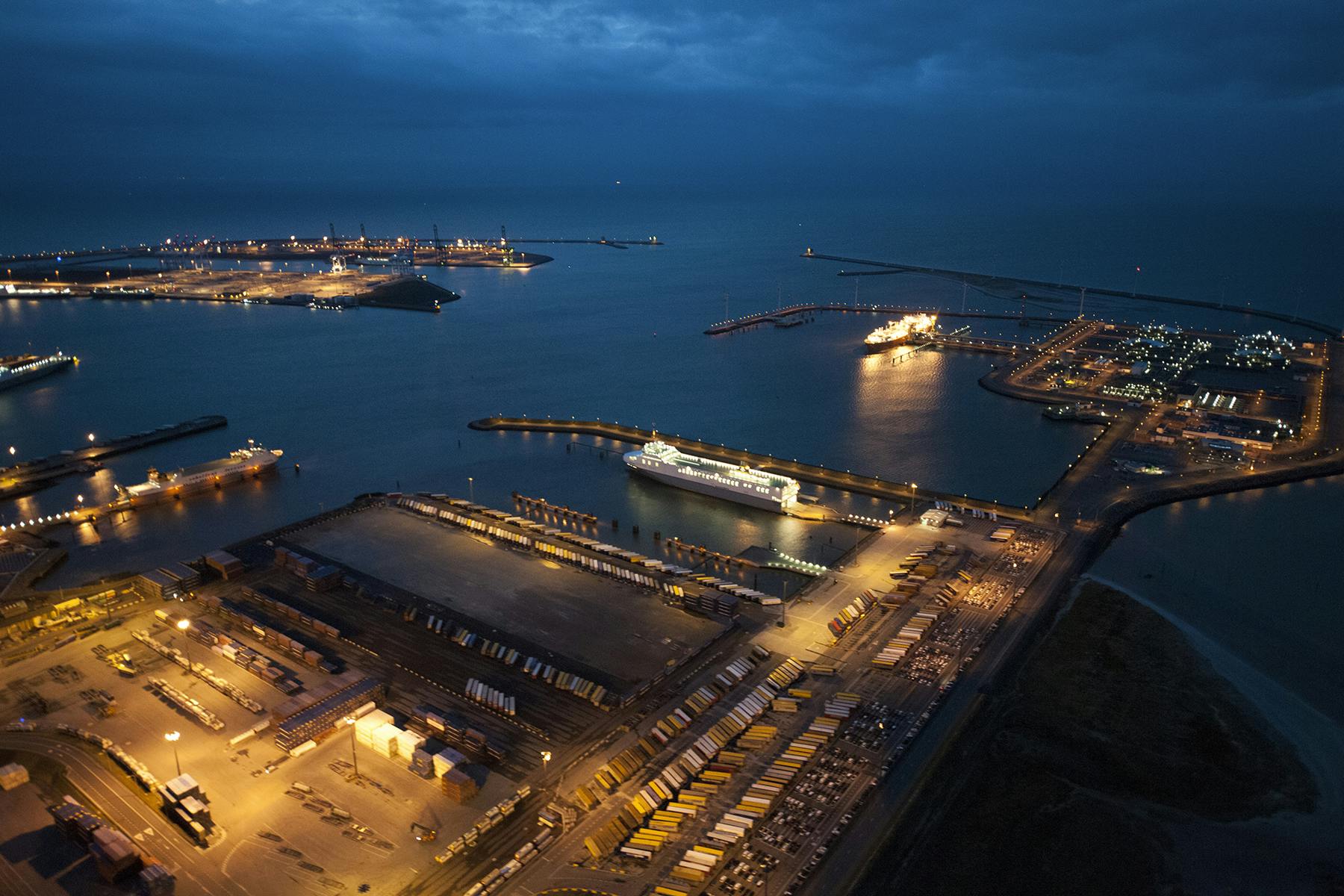
Client's Challenge
LNG Canada is a joint venture comprising Shell (40%), PETRONAS (25%), PetroChina (15%), Mitsubishi Corporation (15%) and KOGAS (5%).
The facility will initially export approximately 14 million tons per year of LNG from two processing units, or trains. The project includes the option to expand to four trains in the future.
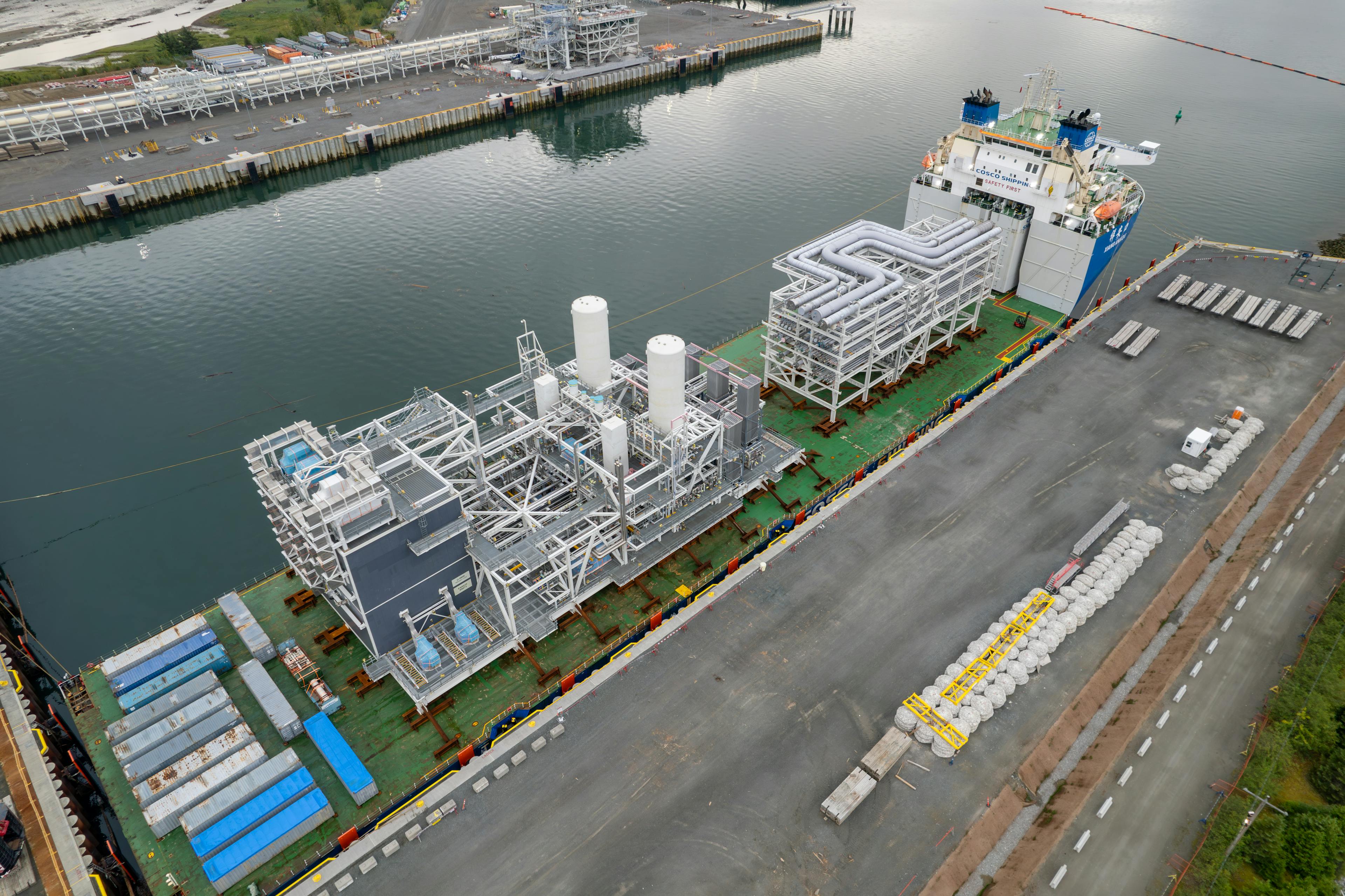

Photo Gallery
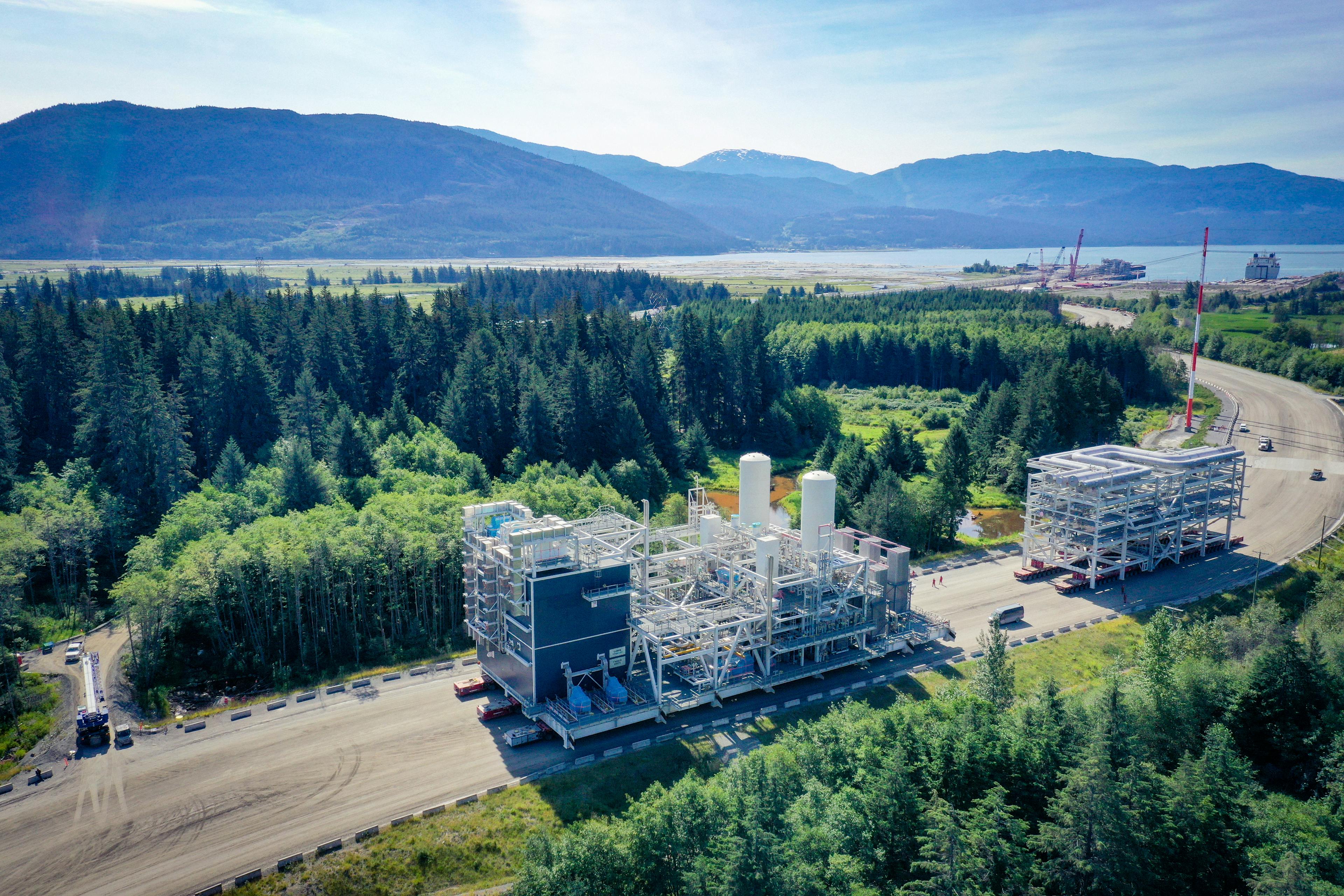
Self-propelled modular transporters (SPMTs) gently lifted and moved modules approximately 3.5 km from docked ships to the areas where they were placed on site. The trip took anywhere from 2 to 4 hours at a 1.2-km/hr crawl.
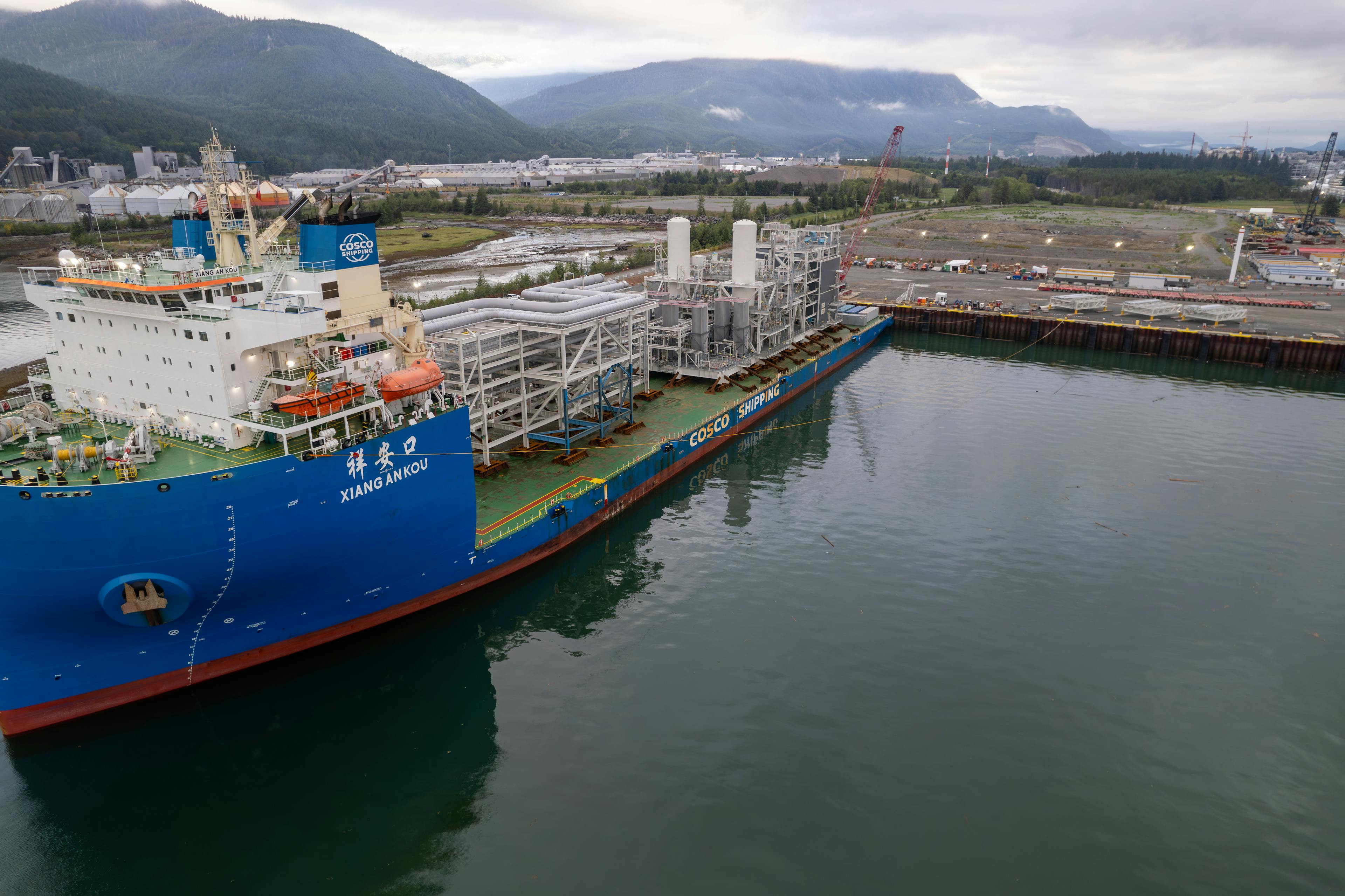
The last of 215 modules arrived by ship from a fabrication yard in China. Our modular construction process advanced construction on site, working with local communities and workers and limiting environmental impacts.
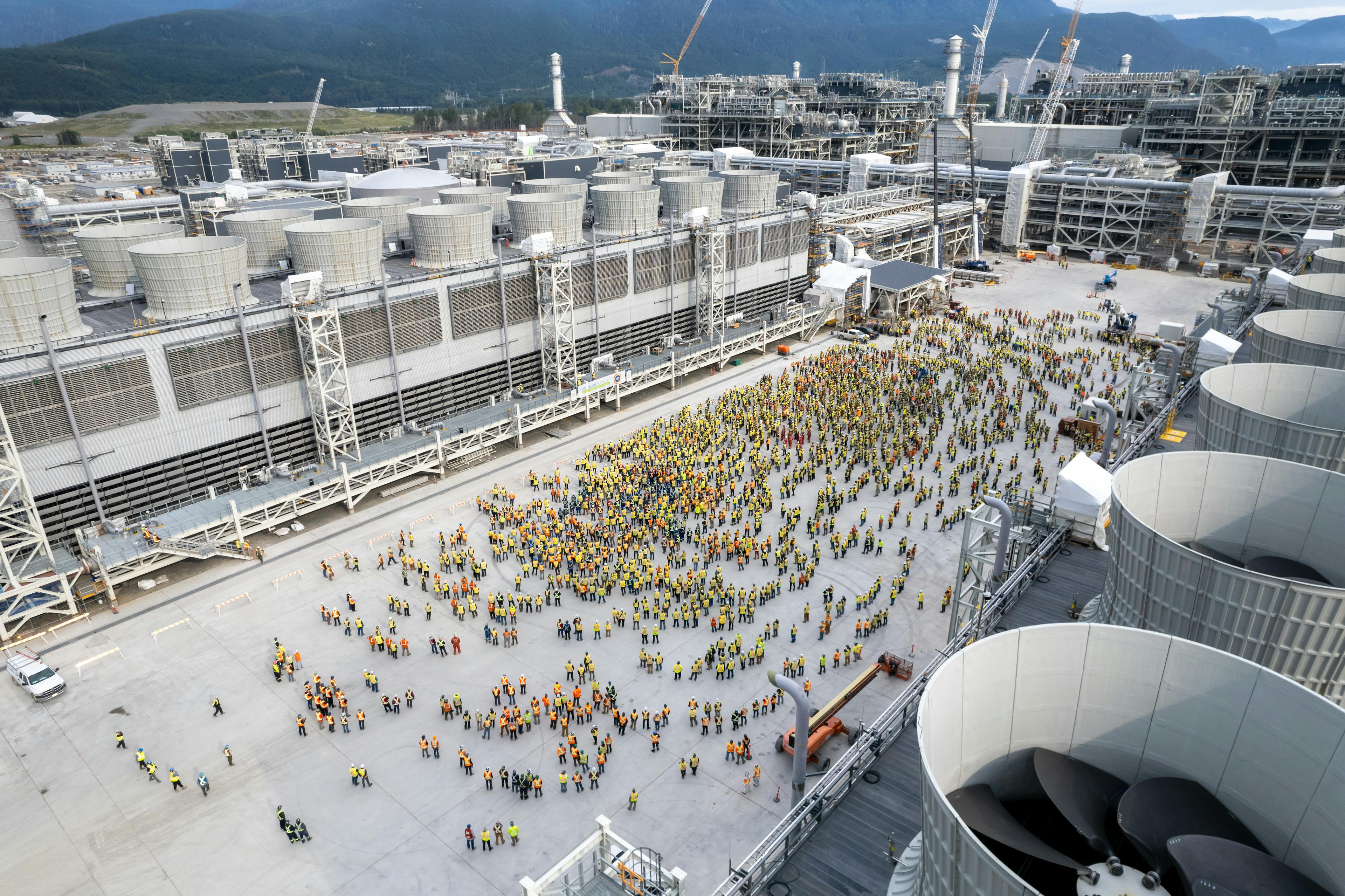
The workforce came together for site-wide mass toolbox meetings. To ensure that everyone took part and heard from project leadership, the large outdoor space between the cooling towers hosted two sessions, one for each shift.
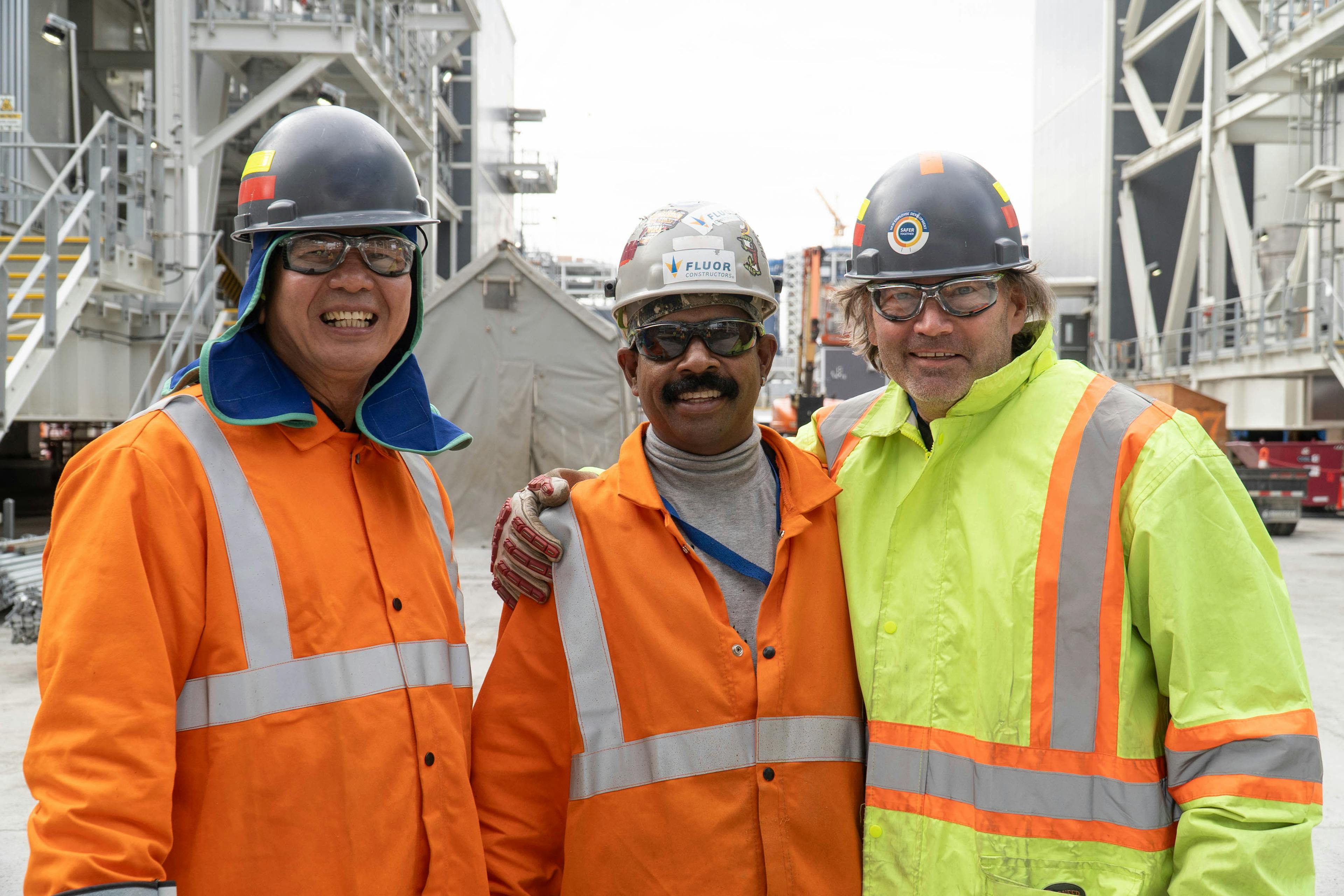
We worked with communities and First Nations to create jobs and business opportunities for a strong, sustainable future for the region. Of the 8,100 workers at peak construction, 99% were Canadian, a quarter of them from BC.
Fluor's Solution
The design of the facility meets some of the strictest regulatory standards in the world for safety, sustainability and environmental protection. In consultation with First Nations, work activities have been planned to minimize potential impacts to the environment.
The project utilizes a cost-effective modular construction approach. Large and complex modules are assembled by several existing fabrication yards and transported to the project site via water, minimizing construction congestion and disruptions in the community.
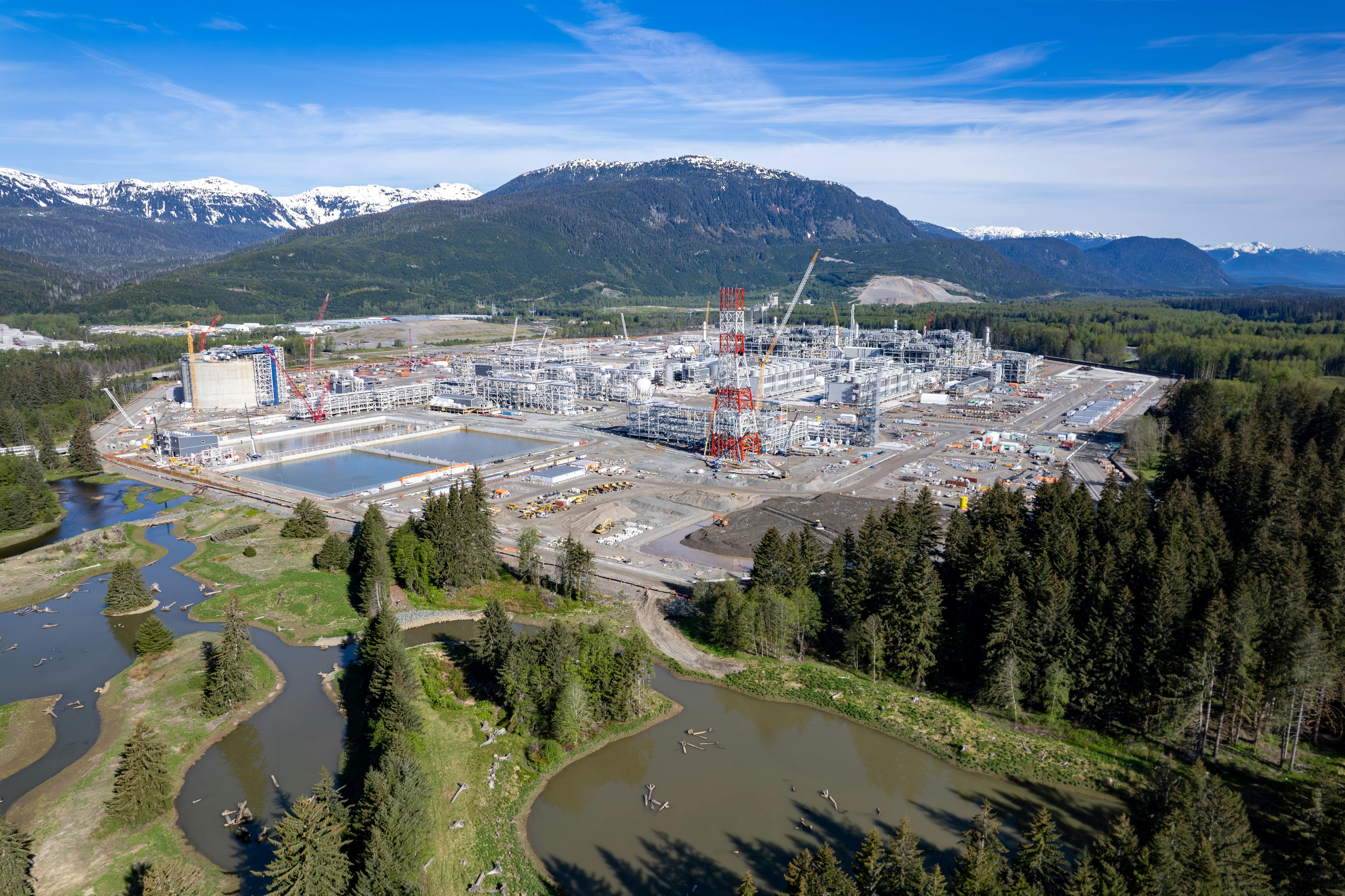
In March 2022, the first major module, measuring 145 feet tall and weighing more than 5,000 tons was received at the site. The final module arrived in July 2023, completing the module fabrication program. Overall, a total of 215 modules of varying sizes have been received and are being set at the project site.
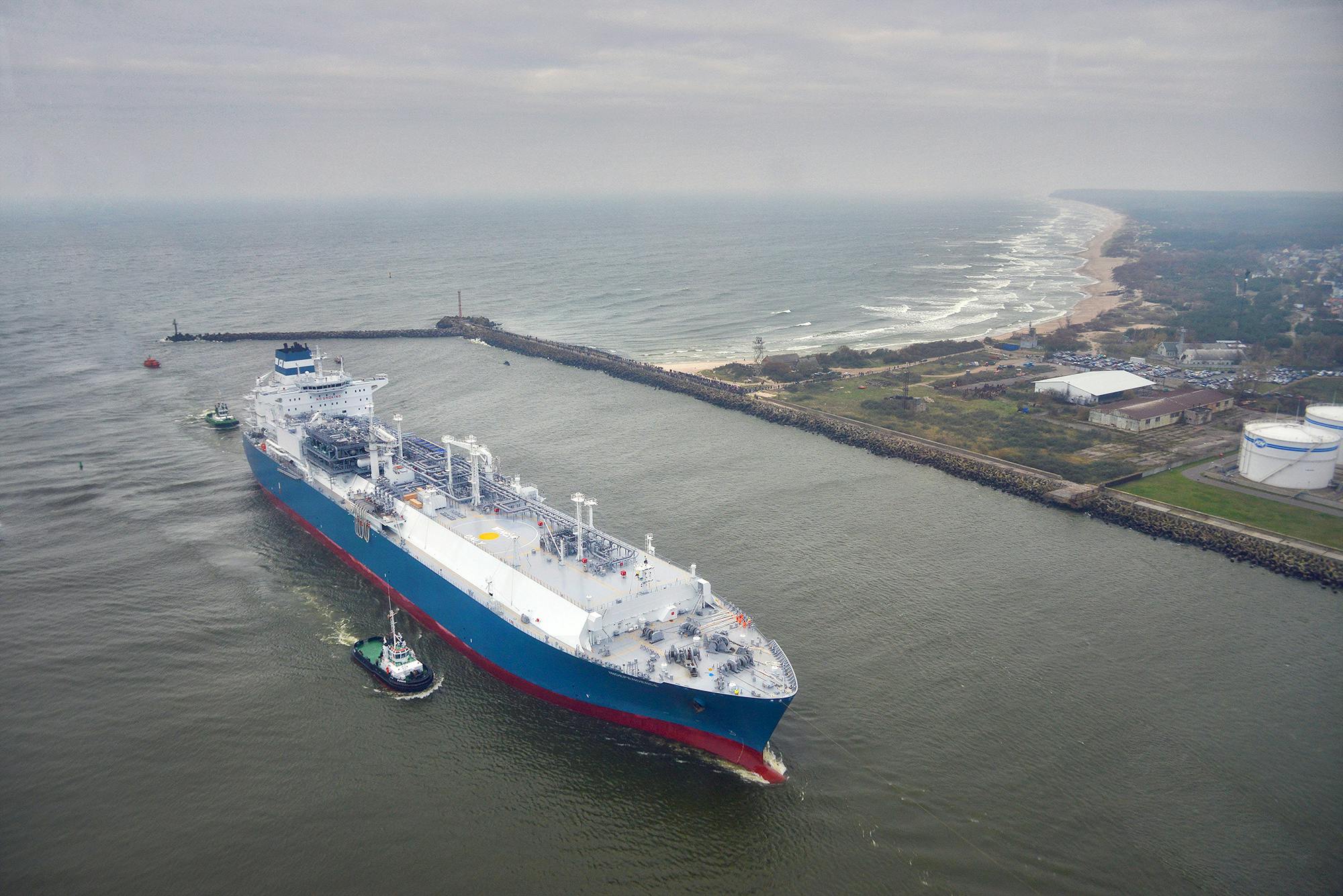
The joint venture focuses on hiring locally and then throughout British Columbia and Canada. More than 4,500 jobs will be created at the peak of construction, which requires approximately 7,000 to 7,500 workers due to the shift work nature of employment.
Workforce development and training programs are available for local community members, with a focus on developing positions for traditionally underrepresented individuals and groups. We are also committed to providing contracting and procurement opportunities for First Nations and local businesses.
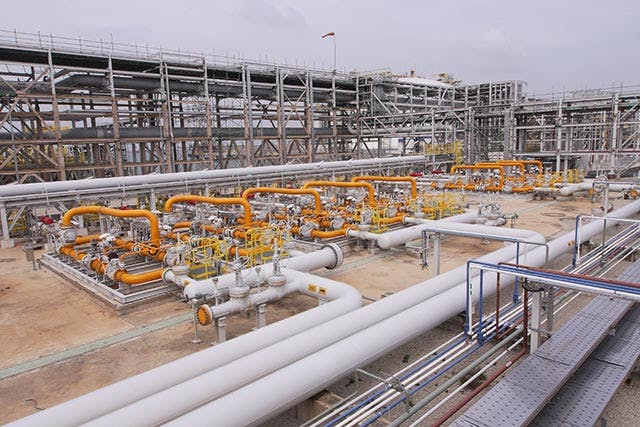

Conclusion
We have a long history of delivering successful projects in Canada, dating back to 1945, when we first broke ground on a refinery expansion in British Columbia.
Fluor and JGC began site activities for the LNG Canada project in 2018. First shipment of LNG is scheduled for mid-decade.
In February 2020, JGC Fluor and LNG Canada were jointly recognized by Shell with its Gold Hard Hat HSE award. The award recognized the project’s Design for Safe Construction program, which is focused on the elimination and significant reduction of hazards through design, providing an overall reduction to life-critical construction risk.